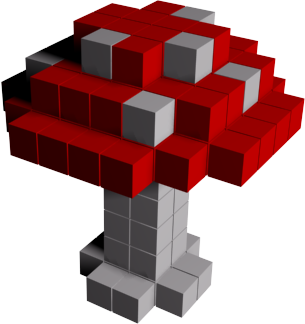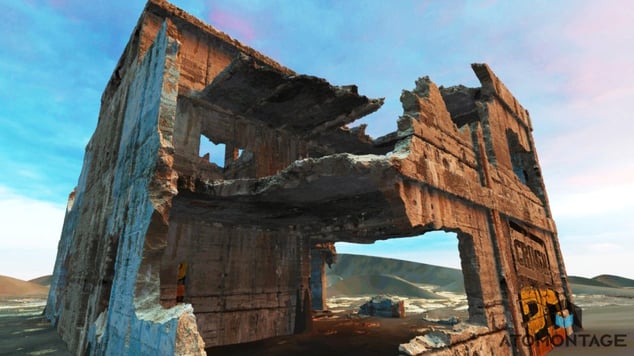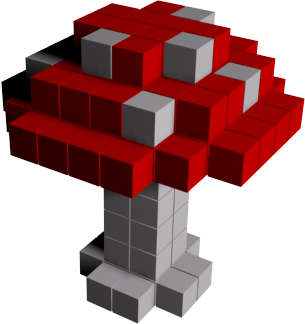
Voxels are to 3D what pixels are to 2D.
Firstly -- let’s examine what pixels actually are. Everything you see on your computer screen is made up of very small squares called “pixels.”
![]() If you’re on a fairly new computer, you most likely can’t make any pixels out, because your display is “high-resolution.” These pixels are so tiny, and there are so many of them, that you can’t actually see them. Instead, you see words, pictures, and symbols that appear smooth.
If you’re on a fairly new computer, you most likely can’t make any pixels out, because your display is “high-resolution.” These pixels are so tiny, and there are so many of them, that you can’t actually see them. Instead, you see words, pictures, and symbols that appear smooth.
Voxels are essentially 3D pixels, but instead of being squares, they are perfect cubes.
In theory, voxels are the perfect modeling technique for replicating reality.
After-all, our world is made of something akin to voxels (but they are much smaller, and we call them “sub-atomic particles”). If you have a high enough density (or “resolution”) and the proper rendering techniques, you can use voxels to replicate real-world objects that would be impossible to differentiate from the real thing -- in appearance and behavior.

In practice, however, there are no mainstream methods for easily building out complex, high-resolution objects using voxels. There are some promising attempts (like Atomontage, referenced above) -- but all the other modeling methods listed above are still quicker and easier for truly complex designs.
Furthermore, modern computers are simply not optimized to handle rendering voxels. Most of our hardware is meant to render polygons -- so high-resolution voxel objects can take a serious toll on current hardware.
Despite not being ready for mainstream adoption, voxel modeling has a few very specific use-cases today.
Currently, voxels are used in many scientific disciplines to quickly determine volumetric data. For example, in Voxel-based morphometry, researchers can compare the differences in concentration of brain tissue using voxels. Geologists often use voxel modeling techniques to model geological features like terrain and elevation. More broadly, scientists can use voxel-based modeling to visualize and measure the volume of anything from fluids to green spaces in urban centers. Voxels are also useful in simulation techniques that require modeling of individual particles, as is the case of smart material simulation.
And that’s where voxels truly shine.
Because they can represent complex objects in reducible, discrete units (like particles), they can be incredibly powerful for simulating real world behaviour of complex objects.
| ADVANTAGES | DISADVANTAGES |
|
|
|
|
|
|
THE PROCESS OF HYBRID MODELING
Simply put, hybrid modeling combines the benefits of BRep, polygonal, point-cloud, and voxel-based modeling -- the four main types of 3D modeling -- into one workflow.
Software development kits like Spatial’s CGM allow 3D developers to build hybrid-modeling features natively into their toolset. This allows designers and engineers to seamlessly hop back-and-forth between modeling types without losing any data in the process. It allows engineers to run any simulation on their BRep files, and take those insights back to automatically tweak their models.
Powerful hybrid modeling software means you can shorten the process of model preparation and fill in the gaps that are typical of 3D models -- like simulating the behaviour of engineered models on a particle-basis.




.jpg?width=450&name=Application%20Lifecycle%20Management%20(1).jpg)















